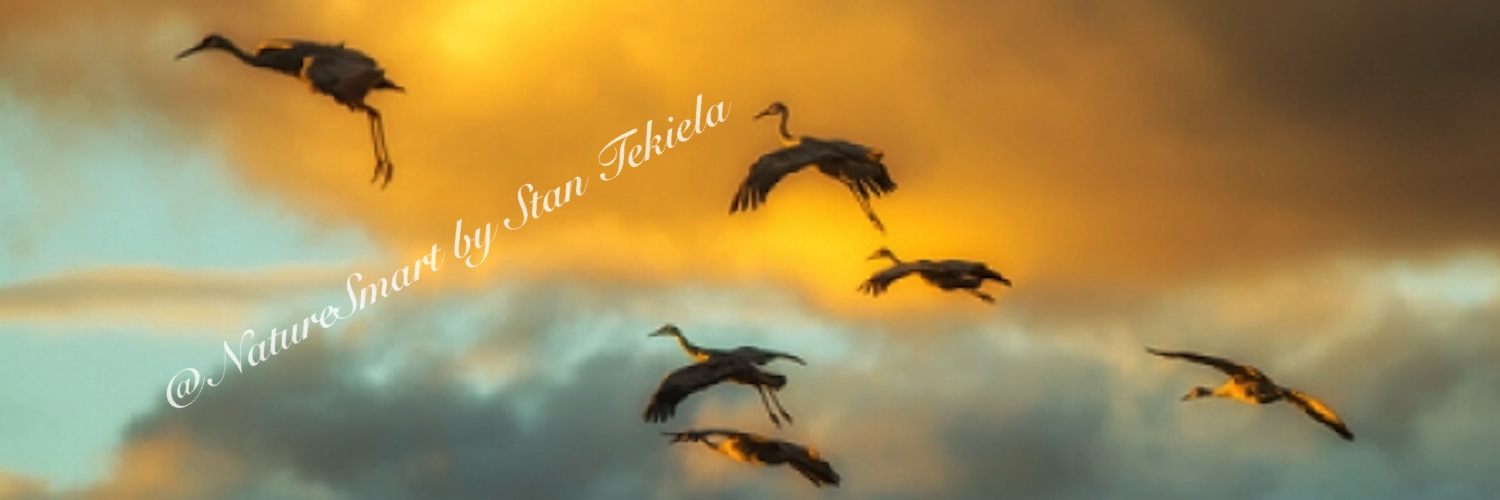
Great Blue Heron Nesting
In this week’s column, Stan Tekiela discusses the nesting habits of the Great Blue Heron.
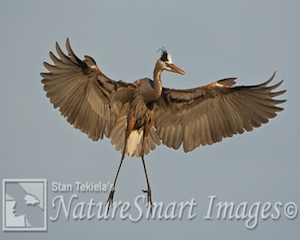 There’s a large and very common bird that people see on a regular basis, but rarely does anyone see it nesting. The bird is the Great Blue Heron (Ardea herodias), the largest and tallest of the North American herons. The name is often shorted to just “GBH.” It is found in every state in the nation in good numbers. Some regions see this long-legged bird all year long, while others see them in warmer weather only.
There’s a large and very common bird that people see on a regular basis, but rarely does anyone see it nesting. The bird is the Great Blue Heron (Ardea herodias), the largest and tallest of the North American herons. The name is often shorted to just “GBH.” It is found in every state in the nation in good numbers. Some regions see this long-legged bird all year long, while others see them in warmer weather only.
This bird is a great example of how common names often don’t make any sense. Let’s break down the name. Great refers to being the largest of its kind. I can agree with that part of the name. What I have problems with is the “blue” part of the name. I have photographed this bird in all stages of its life and in more parts of the country than I can count, and it never looks blue to me at all. It should be called the Great Gray Heron because most of the bird is gray not blue. But enough of my rant about bad common names.
Standing 4 feet tall, most of this height comes from the spindly long legs and snakelike neck. It holds its long neck in a tight S shape while flying, so you often don’t notice the neck length. However, its long, stick-like legs stretch out behind, making it fairly easy to identify this bird in flight.
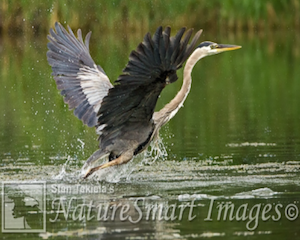 Like many but not all herons, the Great Blue Heron stalks shallow fresh- and saltwater habitats, looking for small fish. They are comfortable hunting in rivers, creeks, lakes, ponds, and even the ocean shore. They use their eyesight to spot their prey. They may move incredibly slowly, but, when they strike, the head and beak move like lightning.
Like many but not all herons, the Great Blue Heron stalks shallow fresh- and saltwater habitats, looking for small fish. They are comfortable hunting in rivers, creeks, lakes, ponds, and even the ocean shore. They use their eyesight to spot their prey. They may move incredibly slowly, but, when they strike, the head and beak move like lightning.
They are well known as a top predator for fish, but not many know these birds also hunt away from water and will stalk gophers, mice, shrews, and other small rodents in fields and prairies. Last winter I watched and photographed several Great Blue Herons hunting gophers in agricultural fields in Northern California. These birds are also well known for taking small birds right out of the nests. They stalk around cattail marshes looking for nesting birds and will snatch up any baby bird they find. Great Blues also hunt for chipmunks, snakes, and just about anything else they can stab with their long, pointed, stiletto bill.
Great Blues hunt both day and night, thanks to an abundance of rods in their eyes that allow them to have excellent vision in very low lighting.
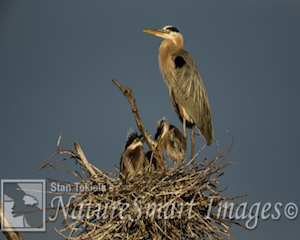 As common as these birds can be, not many people have seen them nesting. That is because they nest in colonies called heronries. They build large nests made of sticks in dead or living trees. Nests are usually 3 to 4 feet in diameter. Oftentimes there will be upwards of five nests in one tree, depending on how many branches are available to hold
As common as these birds can be, not many people have seen them nesting. That is because they nest in colonies called heronries. They build large nests made of sticks in dead or living trees. Nests are usually 3 to 4 feet in diameter. Oftentimes there will be upwards of five nests in one tree, depending on how many branches are available to hold
the nests.
The heronries are spread wide and far and often on islands in large lakes or rivers. This is why many people don’t see the birds nesting. A good-size heronry will have more than 100 nests. Often other birds, such as Great Egrets and Double-crested Cormorants, also nest in these colonies, changing the name to a rookery instead of just a heronry, due to the mixed residents.
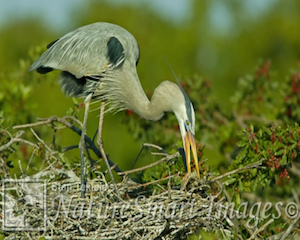 Great Blue Herons will return to the same rookery for many decades, often sprucing up the nest at the beginning of the season. This means the nests get larger and larger with each season. If you get a chance to see a rookery, it’s worth the time. Until next time…
Great Blue Herons will return to the same rookery for many decades, often sprucing up the nest at the beginning of the season. This means the nests get larger and larger with each season. If you get a chance to see a rookery, it’s worth the time. Until next time…
If you enjoyed Stan’s post, you may consider one of his amazing nature books: Majestic Eagles; The Lives of Wolves, Coyotes, and Foxes; or Backyard Birds: Welcomed Guests at our Gardens and Feeders. Young readers will delight in his award-winning children’s books, such as Whose Butt?, Critter Litter, and his latest, Jump, Little Wood Ducks.
You can follow Stan on Facebook and Twitter, or contact him via his web page. Stan’s nationally syndicated NatureSmart Column appears in more than 25 cities spanning 5 states (Minnesota, Wisconsin, Michigan, Illinois, and Pennsylvania) and is circulated to more than 750,000 readers. Stan’s author page on Amazon features some amazing videos! Check them out, and follow him for updates.
For more stories about wildlife and nature, sign up for our newsletter now!
More posts from Stan:
Indigo Bunting—A Familiar Summer Visitor
The Nesting Behaviors of Sandhill Cranes
Big Birds, Baby Birds, Birds Everywhere
Stan Tekiela observes Marsh Wrens
The Magical, Mystical World of Sandhill Cranes



William Yarbrough
I recently came upon a heronry in Puyallup, WA. I had no idea that they nested like this. One morning i noticed a large group of GBH making noises and flying around a grove of trees near Clark’s Creek. 35-50 of them. Watching them more closely I could make out a dozen trees with multiple nests. Quite fascinating.
Liliane Opsomer
Thank you for sharing this with us. What a wonderful sight that must have been!
Michelle Frasher
thank you for this info. last year we discovered two nests in a tall ponderosa pine in our neighborhood. we live in the foothills of the sierra nevadas about 17miles from the south entrance to yosemite national park. we kept hearing this obnoxious noise, sort of like a cross between a duck and a chicken, but could not see from where until my husband saw one of the adults flying up to its nest to feed the young.
now they have returned but not to the same nest as last year. this year they are only two doors down from our house. we have been so excited to be able to observe their mating ritual and nest building from our front yard. there is another pair hanging around in the same tree but do not appear to be doing anything really. we have started photographing their progress.
Liliane Opsomer
Thank you so much for sharing this with us. I am happy the birds returned so you can enjoy seeing them and observe their mating ritual and nest building progress.